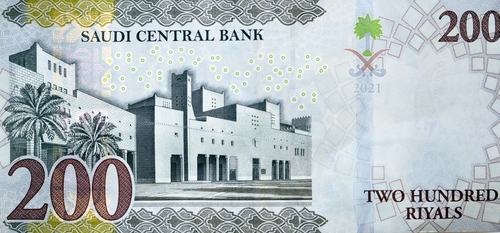The Saudi riyal (SAR) is more than just the official currency of Saudi Arabia; it is a symbol of stability and a key player in global financial markets. For businesses, travelers, and individuals engaging with the Kingdom, understanding the riyal is essential. This article explores the origins, features, and role of the Saudi riyal, its impact on the economy, and how it compares to other currencies.
Whether you’re planning to visit Saudi Arabia, conduct business, or simply diversify your knowledge of global currencies, this guide will provide clarity and insight into one of the Middle East’s most influential currencies.
What is the Saudi Riyal?
The Saudi riyal (SAR) has been the official currency of Saudi Arabia since 1928. It is subdivided into 100 halalas and pegged to the US dollar at a fixed rate of 1 USD = 3.75 SAR, ensuring economic stability in the Kingdom’s trade and financial systems. The riyal’s stability is one of the cornerstones of Saudi Arabia’s economy, making it an accessible and reliable currency in global markets.
Key Features of the Saudi Riyal
- ISO Code: SAR
- Symbol: ر.س (used in Arabic) or SR (common in English)
- Pegged Exchange Rate: 1 USD = 3.75 SAR
- Coins and Notes:
- Coins come in denominations of 1, 5, 10, 25, and 50 halalas, as well as 1 and 2 riyals.
- Banknotes are available in denominations ranging from 1 riyal to 500 riyals.
The Role of the Riyal in Saudi Arabia’s Economy
Saudi Arabia’s economy is heavily reliant on the oil industry, and the riyal plays an integral role in the financial ecosystem supporting this sector. Here’s how the riyal is tied to the Kingdom’s economic performance:
- Stability in Oil Transactions
Being pegged to the US dollar ensures stability in oil trade, as the global oil market uses the US dollar for nearly all transactions. This reduces exchange rate risks for both the government and oil companies operating in Saudi Arabia.
- Support for Economic Reforms (Vision 2030)
Saudi Arabia’s Vision 2030 aims to diversify the economy by reducing reliance on oil. Investments in tourism, technology, and renewable energy make the riyal a crucial tool for international commerce and foreign investment.
- Safe Haven in Volatile Markets
Due to its fixed exchange rate and economic backing from some of the world’s largest oil reserves, the riyal is seen as a stable currency in times of global economic turbulence.
How the Saudi Riyal Compares to Other Currencies
The riyal maintains a unique position in global currency markets due to its fixed exchange rate system. Here are a few ways it stacks up against other major currencies:
1. Saudi Riyal vs. US Dollar (SAR/USD)
The SAR is directly tied to the USD, ensuring exchange rate predictability and simplifying trade relations, particularly with the United States. However, this fixed rate means fewer fluctuations and less benefit or loss from currency appreciation or depreciation.
2. Saudi Riyal vs. Euro (SAR/EUR)
While the SAR remains stable, the Euro floats freely. This often creates fluctuations when converting SAR to EUR, depending on global economic conditions such as trade balances and interest rate changes within the Eurozone.
3. Saudi Riyal vs. Currencies of Neighboring Countries
Currencies like the UAE dirham (AED) and Bahraini dinar (BHD) are also pegged to the US dollar, offering similar stability. The riyal’s strength, however, is bolstered by Saudi Arabia’s larger economy and its targeted investments in economic diversification.
Tips for Travelers and Businesses Using the Saudi Riyal
If you’re planning a trip to Saudi Arabia or conducting business in the region, here are some quick tips for effectively using the Saudi riyal:
When Traveling:
- Exchange Rates: Take advantage of the fixed rate to USD for predictability. Exchange your money at banks or official currency exchanges for the best rate.
- Cash and Cards: Credit and debit cards are widely accepted, but always carry some cash for smaller establishments or traditional markets.
- Plan for Costs: Take note of Saudi Arabia’s VAT (value-added tax), currently at 15%. It applies to most goods and services.
For Businesses:
- Payment Terms: Ensure contracts reference the fixed SAR/USD exchange rate to avoid ambiguity in international dealings.
- Opportunities via Vision 2030: Saudi Arabia’s reforms are creating new business opportunities, especially in tourism, tech, and renewable energy.
Why the Riyal Matters in the Global Economy
On a global scale, the Saudi riyal holds importance due to Saudi Arabia’s pivotal role in OPEC and the global energy market. With oil prices deeply connected to the Kingdom’s budget and economic policies, the riyal serves as an anchor in this sphere. Furthermore, ongoing economic reforms mean that the riyal will support new areas of international commerce, from aviation to entertainment.
Frequently Asked Questions (FAQs)
1. Why is the Saudi riyal pegged to the US dollar?
The peg ensures stability in international trade, particularly in oil, which is primarily traded in USD. This system minimizes exchange rate risks and facilitates predictable financial planning.
2. Can I use US dollars in Saudi Arabia?
No, businesses in Saudi Arabia only accept payment in SAR. Tourists and expats need to exchange their currency for riyals to pay for goods and services.
3. Is the riyal likely to remain pegged to the US dollar?
While the peg has been in place for decades, any changes would depend on shifts in global oil markets or significant policy changes within Saudi Arabia’s economy. Currently, there’s no indication of a move away from the USD peg.
4. Where can I exchange money in Saudi Arabia?
You can exchange currency at banks, licensed exchange offices, and airports. Avoid unlicensed money changers to ensure secure and legal transactions.
